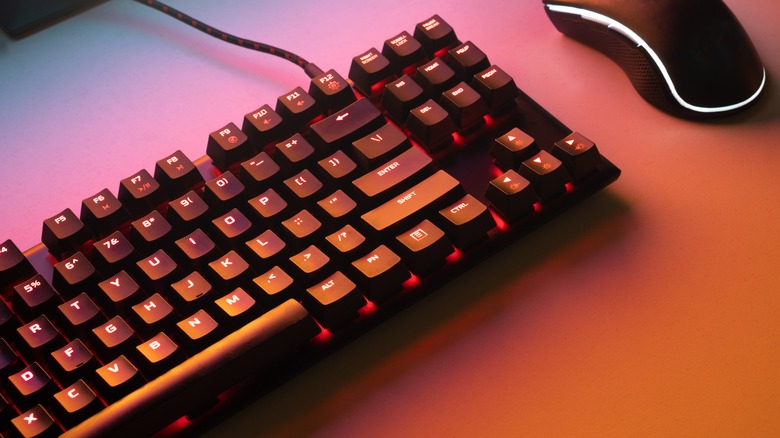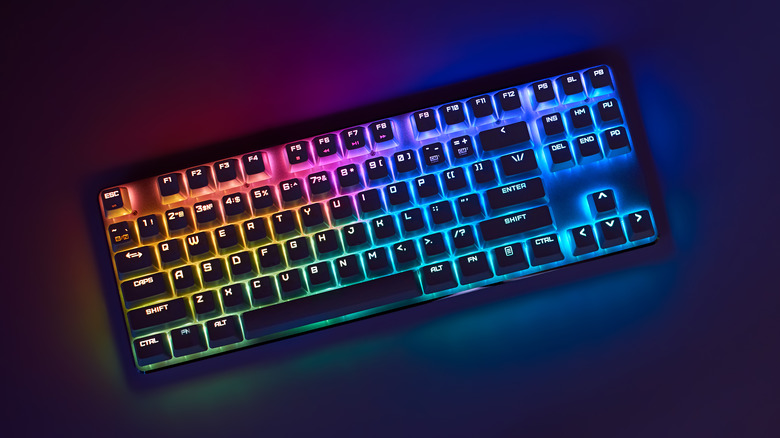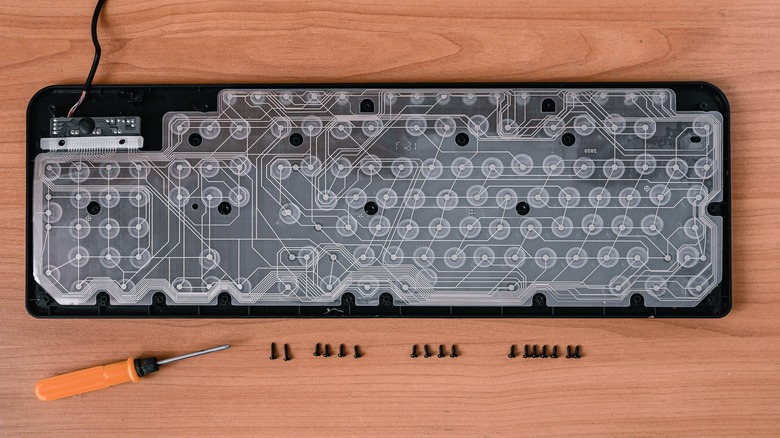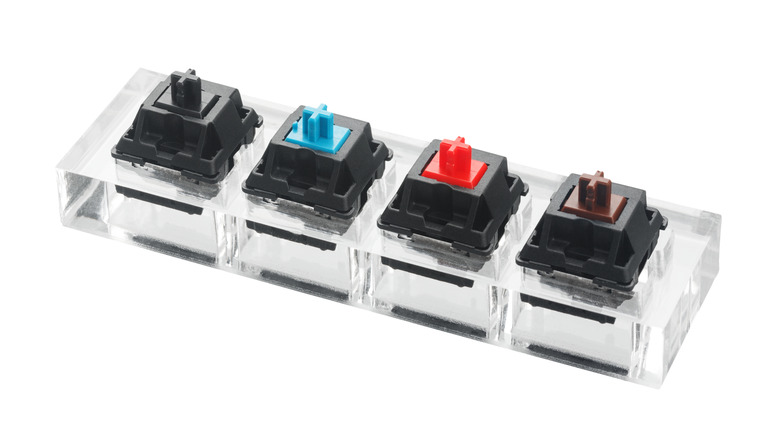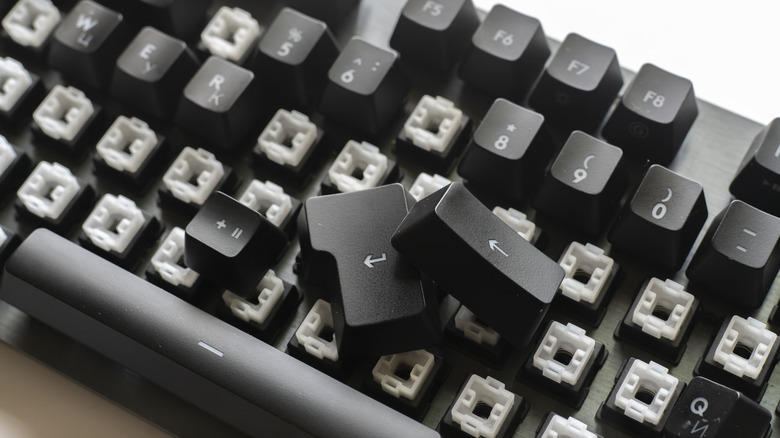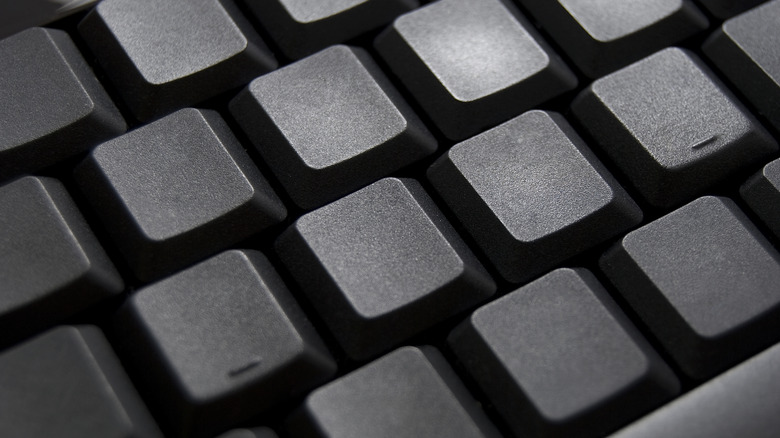Why Are Mechanical Keyboards So Popular, And Are They Really Better?
Buying a new keyboard might initially seem like a relatively simple task, but as soon as you start to research the options available, you'll quickly discover that there is a massive variety of options available.
You can choose between form factors, key layouts, colors, backlight options, connectivity options, and even fonts. You can also make important choices about how your keyboard works by deciding what kind of switches you prefer. Switch is the term used to refer to the physical mechanism that initiates the signal that travels from your keyboard to the computer. Most of them do this by either allowing or stopping the flow of electricity across a circuit. So when you press the A key on your keyboard, a switch is activated that signals your computer to make an A appear on your screen.
There are several different switch types, but one of the most popular varieties you'll hear about is mechanical switches — particularly amongst the gaming community. Mechanical keyboards tend to be more expensive, but they are often lauded as the best options on the market. Just about every major keyboard brand – from Cloud Nine and Kinesis to Logitech and Corsair — makes one. So what makes these keyboards different from the cheaper options, and are they really better?
What makes a keyboard mechanical?
The reason a mechanical keyboard is different from the other options on the market comes down to the kind of mechanism used to activate the switch. Mechanical switches are different from their cheaper membrane counterpart because of the way that the metal switch built into the mechanism under each of the keys works.
In mechanical switches, this is composed of a base, a spring, and a stem. Keyboard manufacturer Dygma explains, "Electricity flows through the crosspoint contact. When you press a key, the two metal components get in contact with each other, thus registers a key press." This physical mechanism is where mechanical keyboards get their name and is also a major part of the reason for their popularity.
There is a sharp, tactile feel when the switch actuates in most kinds of mechanical keyboards. You press down on the keys and there is generally a slight resistance that is met and surpassed as the metal components make contact with each other. Many users have found this to be a more satisfying experience than what is offered by membrane keyboards, which are often described as mushy. Some have also argued that it is more precise since each keystroke is perfectly identical and has a perfectly measured point of contact.
What are the alternatives?
Several kinds of switches are available, but the two main ones to keep in mind are membrane and optical switches. These are the most popular alternatives and, therefore, the ones you are most likely to come across when searching for a new keyboard.
Membrane switches are easily the most common. These basically use layers of plastic, rubber, or silicon to create a squishy membrane that is depressed by the key when you push down on it, either closing or opening a circuit to actuate the switch. They're extremely common since they are cheap to manufacture. This is also why they're frequently used in the most inexpensive keyboards. Some of them have tactile mechanisms built into them to imitate the experience of mechanical actuation, though it is still the membrane that does the actual signaling to the computer.
Optical switches are the new kids on the block. These don't actually use mechanical circuits at all. Instead, they use infrared light and photoelectric switches to detect when you press down on a key. According to PCMag, optical switches "have a quicker reaction time than metal switches and have a longer life because there is no metal contact. They also eliminate the debouncing required to ensure only one signal is generated when the key is depressed. In addition, each key switch is easily removed for cleaning or replacement."
While they're still relatively new, and there aren't a ton of them out there, optical switches are the first to show mechanical switches any real competition in terms of quality.
Different kinds of mechanical switches
Not all mechanical switches are alike. There are three specific types that are most commonly offered: clicky, tactile, and linear.
Clicky switches make an auditory snapping sound when you press one down, and there is a distinct sensation in the fingers when you use them, so you can actually feel the switch actuating. Clicky switches are often called Blues due to the color scheme popularized by the brand Cherry MX, but different brands sometimes use different colors to identify their switches.
Tactile switches, or Browns, are similar to Clicky switches, but the sharpness of the snap is rounded out to more of a bump. You can still feel the actuation, but it's more muted. They're also significantly quieter. Linear switches, or Reds, are the most popular among gamers. They have a smooth actuation that offers an even level of resistance all the way down. They are the quietest and least tactile option.
Of course, different brands have all put their own spin on each of these, with some offering silent switches, speed switches, or extra clicky switches. Some may change the color schemes or make claims of specific features like higher actuation points, but they are all usually some variation of these three basic designs.
Different brands provide lots of options
When looking into mechanical keyboards, it's just as important to evaluate the brand of the switch as it is the brand of the keyboard itself. There are a lot of switch brands out there, and some offer much higher quality than others. Cherry MX is one of the biggest and most universally recognized mechanical switch brands, which is why many people look to Cherry MX as the standard to which they compare all other mechanical switch brands. They're pricy, though, and they aren't for everyone. Fortunately, there are a lot of other amazing brands out there to choose from.
Kailh is a brand that's seen as a very similar but significantly cheaper alternative to Cherry MX. Then there are Gateron switches, which are fairly different from Cherrys but are often considered of equal or even superior quality. Invyr, Gazzew, Akko, and TTC are all considered excellent brands as well. Many keyboards also come with hot-swappable switches, meaning you can replace the switches in the keyboard with other brands or types so long as they are the same size.
This wealth of options is one of the reasons mechanical switches have been so popular for so long. That said, choosing a mechanical keyboard switch is a bit like choosing a pair of shoes. You can check them out online and read dozens of reviews, but the best way to find out what's comfortable for you is to go into a brick-and-mortar store and try them out for yourself.
Are mechanical keyboards better?
Choosing a keyboard is ultimately very subjective. Each person is different, and so is what they want from their keyboard. You're the one who's going to spend hours typing on it and so you should make sure that you're getting one that best suits your needs.
That said, the overwhelming consensus amongst most users and tech reviewers is that mechanical keyboards are significantly better than membrane keyboards in terms of quality. They're more consistent, last longer, and it is generally accepted that they feel better to type on. There is also a much wider variety of brand and texture options, so users have more choices in picking one that meets their tastes.
That doesn't mean mechanical keyboards are for everyone. Some people may prefer optical keyboards for their speed and longevity, though it's worth noting that they aren't typically any less expensive. There are even a few typists out there who may have come to love the mushy feel of membrane keyboards. The best practice is to try a few of them out for yourself, but barring that, mechanical keyboards are a pretty safe bet.
